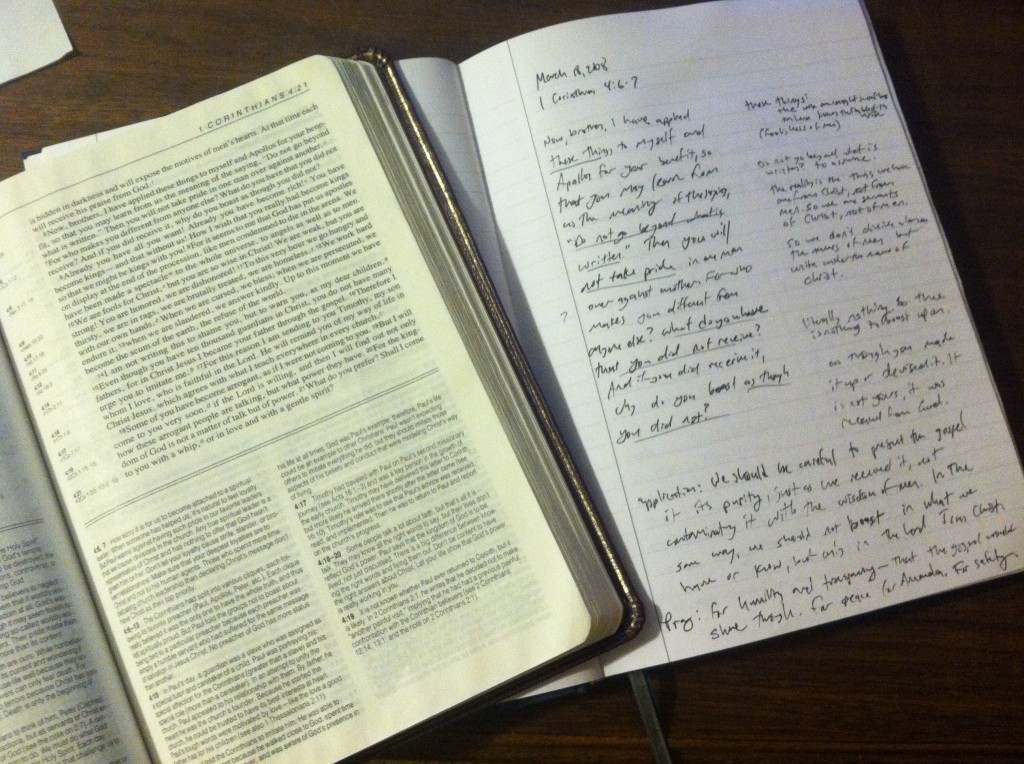 Do you remember the old TV show Doogie Howser, M.D.? The 16-year-old, genius surgeon ends each episode by typing a diary entry on his computer, something he apparently had done every day since 1979. Even when the show launched in 1989, he was ahead of his time.
Do you remember the old TV show Doogie Howser, M.D.? The 16-year-old, genius surgeon ends each episode by typing a diary entry on his computer, something he apparently had done every day since 1979. Even when the show launched in 1989, he was ahead of his time.
A number of years ago, I learned a similar process from a missionary friend of mine—applied to Bible study. Though I have tweaked the system, and used it occasionally (but not daily) over the years, I have found it to be a helpful system.
Here’s how it works:
- Read. Begin by reading the passage of scripture you wish to study, including a significant amount of context. If you are following a daily Bible reading plan, read the entire section for the day, then choose a smaller subset for further study. Three to 6 verses is usually about right.
- Read again. Read the passage for study several times, including at least one time out loud.
- Write. I recommend you write in some kind of journal or notebook that you can use over a longer period of time (not on a computer like Doogie did). At the top of the page, identify today’s date and the passage you are studying. Divide the page in half with a vertical line, then begin writing the text in your own handwriting in the left hand column.
- Study. As you write, pause at each break in thought and record any questions or insights in the right hand column. Record bullet points, cross references, or possible ideas for application.
- Underline. Underline any phrases or words you want to consider more carefully. Look them up in a Bible dictionary, commentary or online study resource. Cross-reference them with other passages that use the same word or phrase, being sure to compare context as well. Record your notes in the right hand column as well.
- Continue to Write and Study. As you work down the page, write the verse number to the far left at the beginning of new verses. Make sure your writing of the text corresponds to the relevant notes on the right. In some places you may have a gap in the left column or a gap in the right column. This will help to keep your thoughts in line with the text.
- Apply. Underneath your study notes, write a sentence or two of application for the day, writing all the way across the page. This could be specific application for your life, or a broader application for the church, your ministry or workplace.
- Pray. Finally, record a prayer for the day. You may not necessarily write out the prayer as you say it, but record what this passage and study has inspired you to pray for. In the example from the photo, completed while living overseas, I prayed for “humility and transparency—that the Gospel would shine through. For [my wife] Amanda, and for safety.”
I have found that this method allows me to record a lot more of my thoughts than I would have room for in the margin of my Bible. By transcribing the text alongside my notes, it helps me to commit the passage in my memory, and to connect my thoughts and application directly with the text that inspired them.